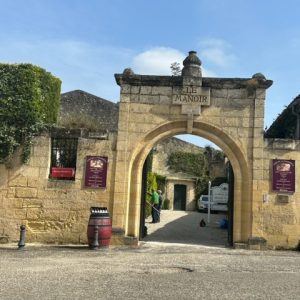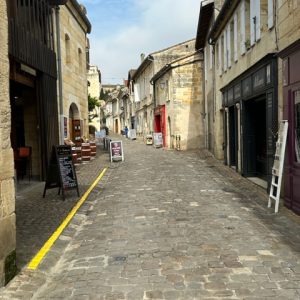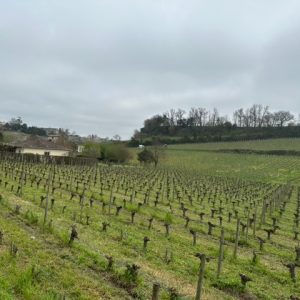Saint-Émilion, Bordeaux
I first visited the stunningly beautiful Saint-Émilion in 1989 with my dear mother. But somehow I never made it back until this week.
My timing was not perfect. In mid-March, there are no leaves or grapes on the vines. But Saint-Émilion’s hilly topography, and wonderful architecture make it beautiful at any time of the year. Moreover, it is perfect for wine walking.
Saint-Émilion is one of the principal red wine areas of Bordeaux along with the Médoc, Graves and Pomerol. It is located 35 km east of Bordeaux, between Libourne and Castillon-la-Bataille. Vineyards make up more than 67% of the land area of the commune.
The region is much smaller than the Médoc and adjoins Pomerol. As in Pomerol and the other appellations on the right bank of the Gironde, the primary grape varieties used are the Merlot and Cabernet Franc, with relatively small amounts of Cabernet Sauvignon also being used by some châteaux. The two most highly ranked estates are Château Figeac and Château Pavie.
The Romans planted vineyards in what was to become Saint-Émilion as early as the 2nd century. In the 4th century, the Latin poet Ausonius lauded the fruit of the bountiful vine. Saint-Émilion, previously called Ascumbas, was renamed after the Breton monk Émilion (d.767). Because the region was located on the route of the Camino de Santiago, many monasteries and churches were built during the Middle Ages.
As a cultural landscape demonstrating a long, living history of wine-making (dating from Roman times), Saint-Émilion was registered as a UNESCO World Heritage Site in 1999. Saint-Émilion’s history goes back at least 35,000 years ago, to the Upper Paleolithic. An oppidum was built on the hill overlooking the present-day city in Gaulish times, before the regions was annexed by Augustus in 27 BC.
The monolithic church of Saint-Émilion is an 11th century church carved entirely out of a limestone cliff. It is one of the largest underground churches in Europe, with an estimated 15,000 cubic meters of rock extracted. The Tour du Roy is a limestone donjon built in 1237, possibly constructed by order of Henry III, King of England and Duke of Aquitaine.
Saint-Émilion is also known for its macaroons, which have been made continuously since 1620. The recipe has been passed down through generations by Ursuline nuns. These macarons are made from ground almonds, sugar, and fresh egg whites.




